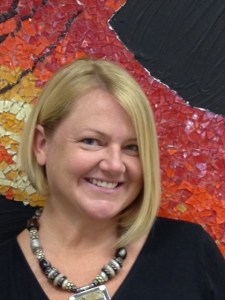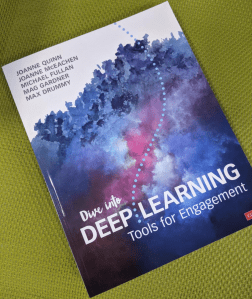Note: This reflection from our Summer learning is just as relevant today as it was in August, as many schools are back to remote or hybrid learning as we continue to endure this pandemic. Please share your thoughts and learning in the comments.
“I can’t wait to spend my summer rethinking and creating new units!” exclaimed no teacher ever.
This sentence may have never been said by any sane teacher. However, 2020 was full of surprising comments that no one ever thought would be spoken. Teachers around the world were stuck at home this summer, and with most plans canceled… why not start planning for the possibilities of the new school year?
In an effort to break the monotony of Groundhog Day- Summer 2020 Edition, we invited our teachers to join unit planning cohorts to prepare for the new school year that started in the hybrid model. Each cohort was virtual, two days long, and participants were paid for their time and effort. Our Learning Office (Deputy Head of School for Learning and 2 curriculum coordinators) facilitated the learning and supported teachers and teams as they worked throughout each day.
A Case for Unit Redesign
Previously, we used Understanding by Design as our model for unit planning. However, over the last year, and more frequently during the current pandemic, we have been rethinking our unit design model. In the fall of 2019, our Leadership Team read Dive Into Deep Learning: Tools for Engagement by Quinn et al., 2019, and, after partnering with their organization, New Pedagogies for Deeper Learning (NPDL), we began learning about their Learning Design Model- a unit planning (and learning experience) template that still supports backward design but also incorporates the principles of Design Thinking by starting with understanding the student.
Emergency remote learning from early March through June taught us that we needed to first focus on students and their interests and needs followed by the most essential learning outcomes and the success criteria of those outcomes. We tweaked the NPDL Learning Design Model just a bit to fit our needs.
Our New Thinking about Unit & Learning Design
| Step | Guiding Question(s) |
| Understanding our Students | What do we already know about our students? |
| Learning Outcomes | What do we want these students to learn? |
| Success Criteria | How will we know these students learned these outcomes? |
| Overview of the Unit | What is the story of this learning experience? What will these students produce? |
| Assessment Tools | What tools will we and our students use to assess learning? |
| Reflection | How well did this learning design meet the intended learning outcomes? How might we improve this unit? |
Introducing the New Approach
For the purpose of this blog and the current need to empathize with and understand the needs of our students now more than ever, I will focus on the first step: Understanding our Students.
| What do we already know about our students (strengths, needs, interests)? |
During our first planning cohort of the summer, we introduced our new unit design model. Once teams began working on their own, we noticed that some of them skipped this first question and moved ahead to the parts they were more familiar and comfortable with, such as learning outcomes, success criteria, and assessments. Teachers were unsure how to answer this question because they didn’t know who their students were yet. We quickly stepped in and coached teams to step back and reflect on students in general, the users of the learning, before moving forward. With a deeper look at the students who will be engaged in this learning, the next steps of the unit design became clearer and more meaningful.
A Few Examples
An example from our Japan Seminar (JSEM) course for seniors. The unit is called Confederate Monuments.
| What do we already know about our students (strengths, needs, interests)? They want to learn about Japan. They just had American History- and I want to connect their learning about US History to talk about major themes in JSEM. They have been exposed to Black Lives Matter (BLM) during distance learning and other issues that they may not have gotten to process. They are interested in contemporary topics. Because they are taking this course, they want to be challenged in terms of ideas and texts. They want to discuss things. |
Once this teacher was able to take time and consider the students coming into the class, the reason, and outcomes, for the unit made more sense. The focus became more about connecting to prior learning and thinking in order to process and discuss contemporary topics such as BLM.
Similar to a backward-design unit, the learning outcomes, success criteria, and assessment ideas followed but it was now evident that the unit had a specific audience that framed the purpose for learning.
An example from a Grade 6 Humanities unit on Discovering Personal Perspectives.
| What do we already know about our students (strengths, needs, interests)? Students are entering middle school and are curious about themselves, peers, and teachers. With the hybrid model, students will be curious, but more nervous about middle school and the changes from distance learning in 5th grade. Students come from backgrounds both diverse and in some ways similar and need to recognize elements of their identity which affect their viewpoint. Current events around the world have made identity, bias, and race conversations more necessary. |
Another example from the High School: Fine Arts 1 unit on Elements, Principles, and Composition.
| What do we already know about our students (strengths, needs, interests)? Level 1 students come in with a varied amount of interest in art in general. 9th or 10th graders may have more interest and have plans for pursuing to AP level than higher grade students who have put off taking an art class. A wide variety of skills, experiences, etc. depending on if they had art courses at the middle school level. If students came from our middle school Art program, they will have a familiarity with the Elements & Principles vocabulary and concepts. Students often have anxiety about their drawing skills, specifically about making things look “real.” Students have more experience and thus facility with a pencil (graphite) but limited experience with the broader range of drawing media (charcoal, ink, pastel). Students often have a tendency to use symbolic representations of emoji type symbols (hearts, smiley faces, etc) and will need support to move beyond that. |
These examples are still a work-in-progress and teachers will continue to build on their understanding of the students in their classes and reflect on those understandings within their unit design. As the year progresses, they will know their students better and be able to define who their audience is, more specifically.
Empathy before Curriculum
| Begin with the A few tips for shifting to a student-centered approach |
| 1. Choose a unit that you have taught previously and reflect on what students liked about the unit, what they struggled with, and the most essential concepts and skills of the unit. 2. Close your eyes and picture your classroom filled with students smiling and eager to learn. 3. Think about where they are coming from, their experiences, their background knowledge. Consider what their strengths, needs, and interests might be. 4. Jot down your thoughts on the top of your unit planner. 5. As you work through your revised unit, keep these students in mind. This is about them; it should always be about them. |
This year is very different from any other school year. Students may be attending school virtually, face-to-face but with social distancing and mask requirements, and maybe a combination of both models. They will need to be able to trust their teachers through this pandemic and beyond. By rethinking units and learning experiences with students’ strengths, needs, and interests in mind, they will see that their teachers care for them and will guide them through what is essential in learning and in life.
References
Quinn, J., McEachen, J., Fullan, M., Gardner, M., & Drummy, M. (2019). Dive into deep learning: Tools for engagement. Sage Publications.


